Nagasaki, a city steeped in history and blessed with natural beauty, offers a captivating blend of East and West, tradition and modernity.
From tranquil gardens and historic landmarks to bustling streets and vibrant festivals, Nagasaki is a treasure trove of unforgettable experiences.
Embark on a journey with me as we unveil the 10 best beautiful places in Nagasaki, each a testament to the city’s unique charm and diverse attractions.
Whether you’re seeking cultural immersion, historical exploration, or a breathtaking view, Nagasaki has something to captivate every traveler.
- Recommended BEST Tours in Nagasaki
- Recommended Nagasaki Hotels
- Cheap Flights, Airline Tickets & Plane Tickets (TRIP.COM)
Number 10: Dejima.
Our exploration of Nagasaki begins on Dejima, a small artificial island significant in Japanese history. Constructed in the 17th century during Japan’s period of isolation, Dejima served as the sole gateway for trade and cultural exchange with the West.
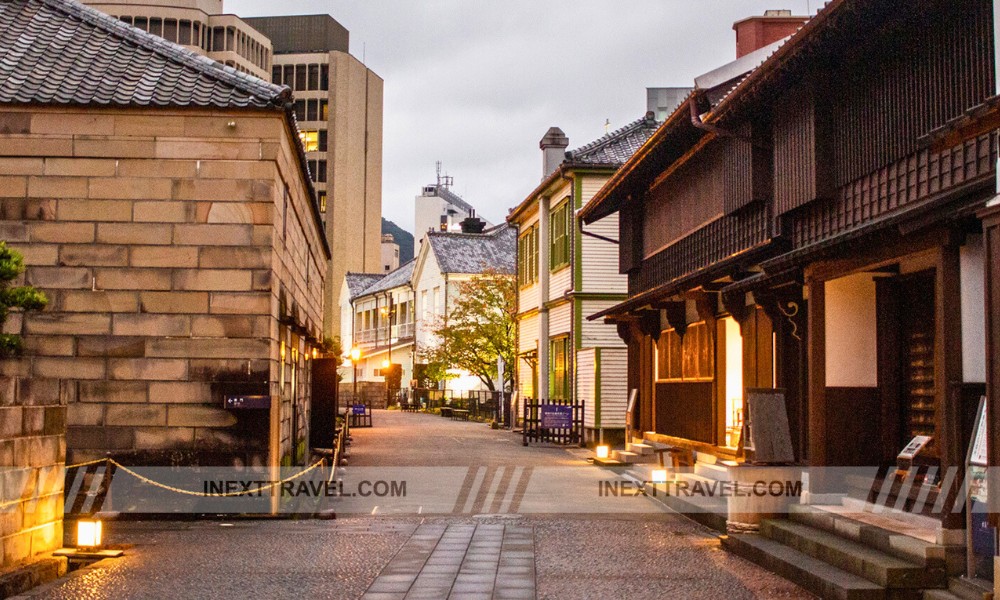
As you step onto this historic island, you’ll be transported back to an era of bustling trade and cultural fusion. Stroll through the meticulously reconstructed warehouses and residences, each a testament to the Dutch architectural style of the time. Marvel at the unique blend of Japanese and Western elements, reflecting the cultural exchange between the Dutch traders and the Japanese locals.
The Dejima Museum offers a fascinating glimpse into life on the island during its heyday. Explore exhibits showcasing artifacts, documents, and artwork that shed light on the daily lives of the Dutch traders and the unique cultural interactions that took place. Learn about the intricate trade system that allowed Japan to maintain contact with the outside world while adhering to its strict isolationist policies.
As you wander through the narrow streets of Dejima, imagine the bustling activity that once filled this tiny island. Picture Dutch merchants bargaining with Japanese officials, interpreters translating languages, and curious locals observing foreign customs and traditions. Dejima was a melting pot of cultures where the East met the West and exchanged new ideas and technologies.
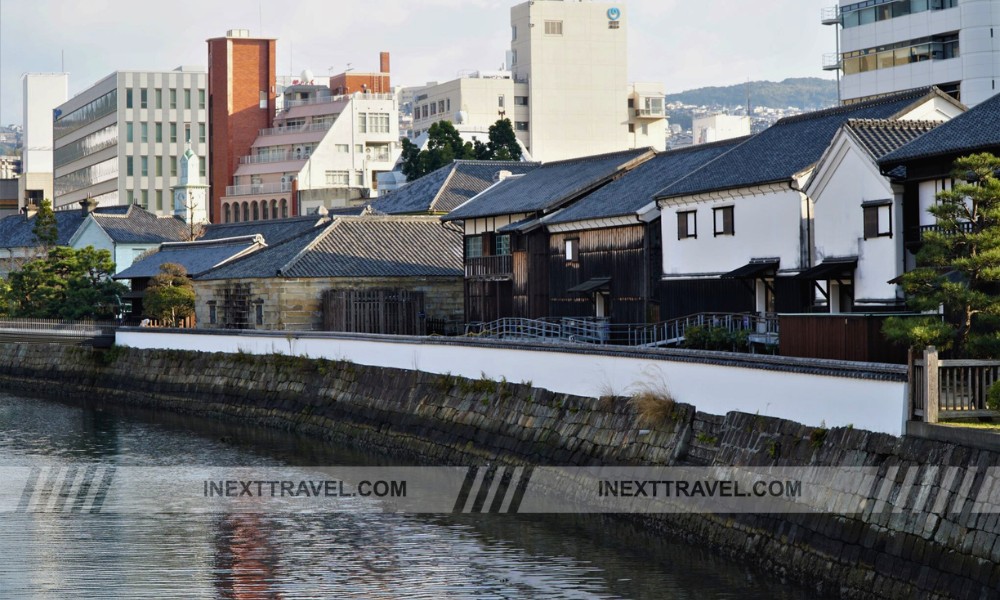
Today, Dejima reminds us of Japan’s fascinating trade and cultural exchange history. It’s a place where you can step back in time and experience the unique atmosphere of this historic island. Whether you’re a history buff, an architecture enthusiast, or simply curious about Japan’s past, Dejima is a must-visit destination that will give you a deeper understanding of this fascinating chapter in Japanese history.
Number 9: Sofukuji Temple.
Escape the bustling city and find serenity at Sofukuji Temple, a captivating example of Chinese-style Buddhist architecture in Nagasaki’s heart. This temple, founded in 1629 by a Chinese monk, offers a unique glimpse into the fusion of Chinese and Japanese cultures that has shaped Nagasaki’s history.
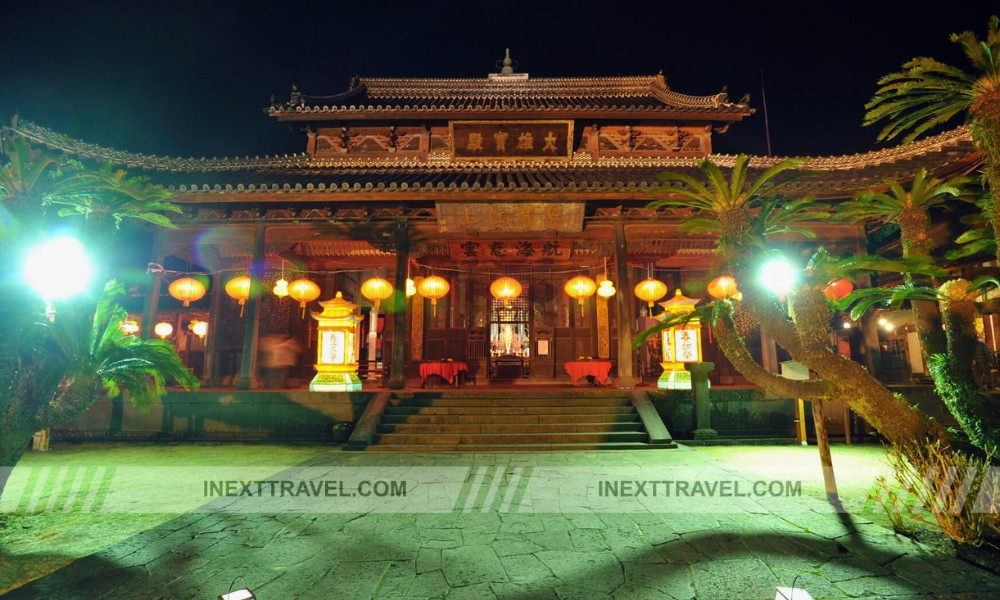
As you approach the temple, the first thing that will catch your eye is its magnificent red gate, the “Dragon Palace Gate.” This imposing structure, adorned with intricate carvings of dragons and other mythical creatures, symbolizes the temple’s Chinese heritage.
Step through the gate and enter a world of tranquility and peace. The temple complex, built on a hillside, features a series of halls, pavilions, and courtyards connected by winding paths and stone stairways. The architecture is a harmonious blend of Chinese and Japanese styles, with ornate details and vibrant colors.
Admire the intricate wood carvings adorning the temple’s eaves and pillars, depicting scenes from Buddhist mythology and Chinese folklore. Explore the peaceful gardens, where koi ponds, stone lanterns, and bamboo groves create a serene atmosphere. Take a moment to meditate or sit and soak in the tranquil ambiance.
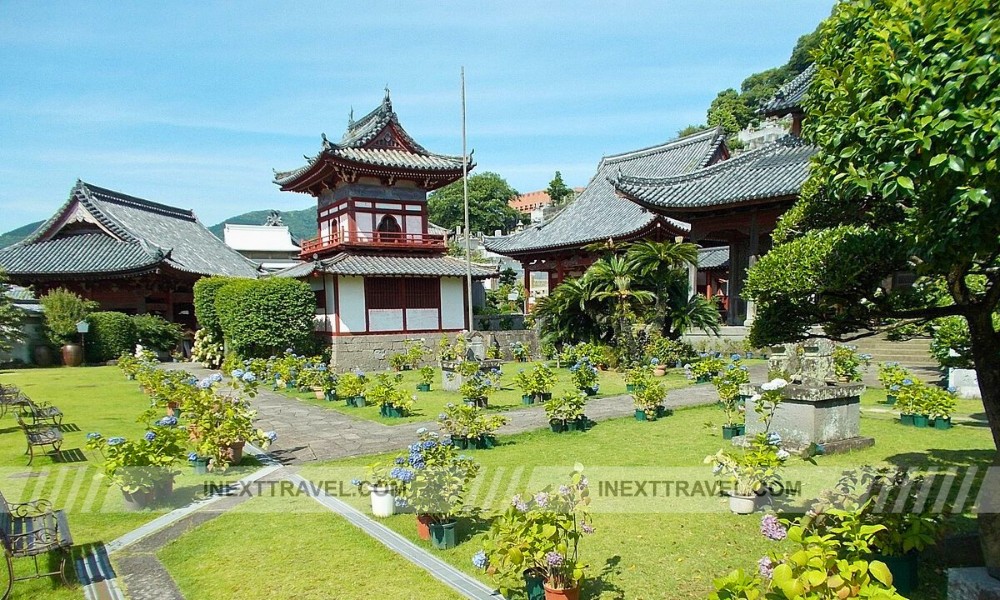
The Sofukuji Temple Museum provides a fascinating insight into the temple’s history and significance in the local community. Learn about the Chinese traders who settled in Nagasaki during the Edo period and their role in establishing this unique place of worship. Discover the stories behind the temple’s artifacts, including ancient statues, scrolls, and ritual objects.
Sofukuji Temple is a testament to the enduring cultural exchange between China and Japan. Its unique architecture, peaceful gardens, and rich history make it a must-visit destination for anyone seeking to delve into the heart of Nagasaki’s cultural heritage.
Number 8: Glover Garden.
Nestled on a hillside overlooking Nagasaki Harbor, Glover Garden is a captivating oasis that transports visitors to a bygone era of international trade and cultural exchange. This historic park is home to a collection of beautifully preserved Western-style mansions, each a testament to the architectural legacy of the foreign merchants who resided in Nagasaki during the late 19th century.
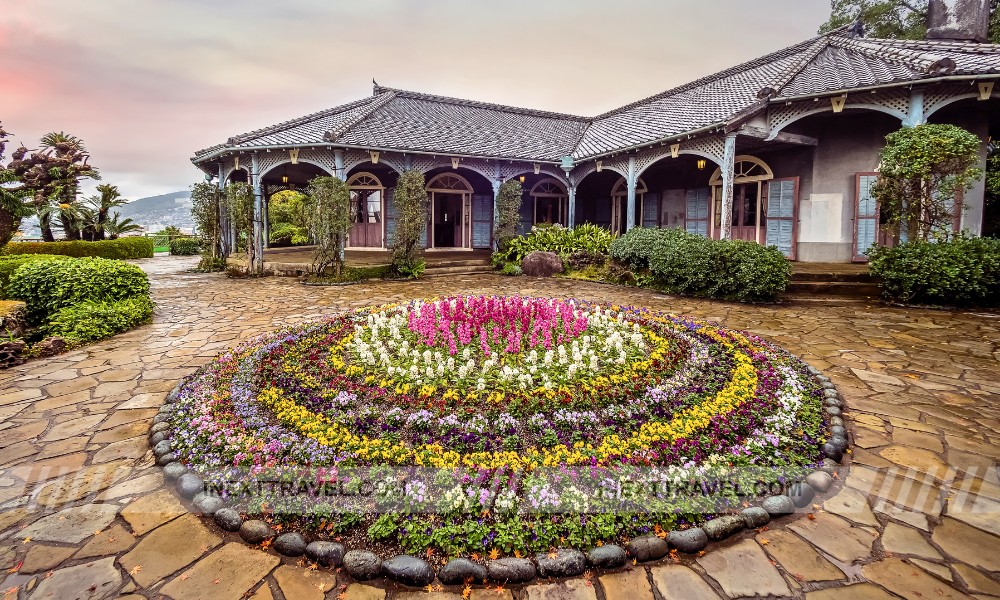
As you wander through the garden’s winding paths, you’ll be greeted by a series of elegant mansions, each with unique charm and character. Admire the intricate details of the Victorian and colonial-style architecture, the stained glass windows, and the verandas that offer stunning views of the harbor below.
The garden’s namesake, Thomas Blake Glover, was a Scottish merchant who played a significant role in the modernization of Japan. His former residence, now a museum, offers a fascinating glimpse into his life and the history of foreign trade in Nagasaki. Explore the rooms where he entertained dignitaries, hosted lavish parties, and learned about his contributions to Japan’s shipbuilding, coal mining, and tea industries.
Beyond the mansions, Glover Garden is a horticultural delight, with meticulously manicured lawns, vibrant flower beds, and exotic plants worldwide. Stroll through the tranquil gardens, discover hidden corners, and enjoy the peaceful atmosphere that permeates this historic site.
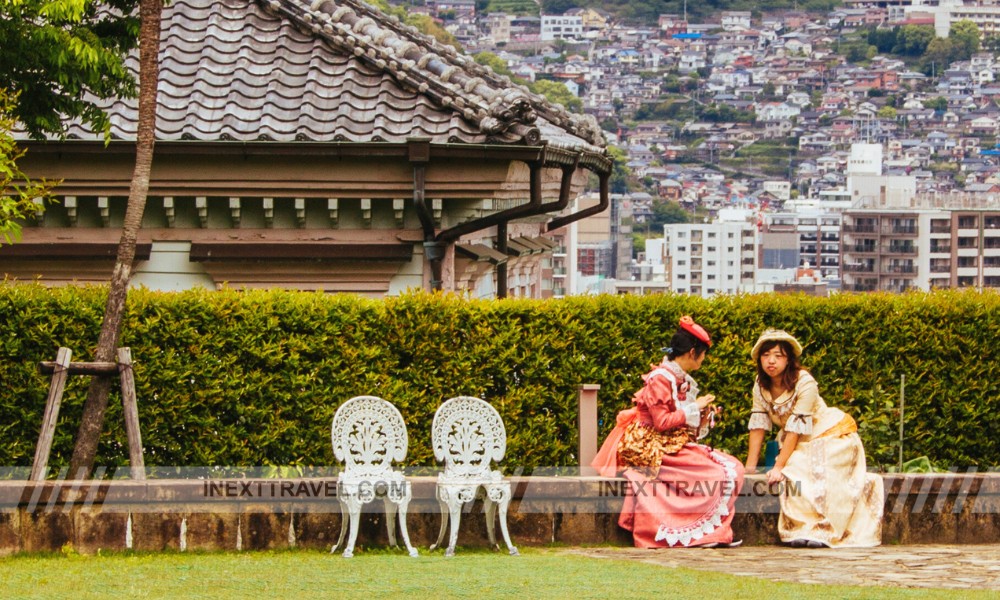
But perhaps Glover Garden’s most captivating aspect is its breathtaking view of Nagasaki Harbor. As you gaze out at the bustling port, you can imagine ships laden with goods from distant lands arriving and departing, carrying the hopes and dreams of merchants and explorers.
Glover Garden is a place where history, culture, and nature intertwine. It’s a testament to the enduring legacy of the foreign merchants who helped shape Nagasaki’s unique identity and a reminder of the importance of cultural exchange and understanding. Whether you’re a history buff, an architecture enthusiast, or simply seeking a peaceful retreat with stunning views, Glover Garden is a must-visit destination in Nagasaki.
Number 7: Mount Inasa.
Prepare to be mesmerized as we ascend Mount Inasa, Nagasaki’s iconic peak, offering one of the world’s most breathtaking night views. Ascend by ropeway or bus to the summit, and as you rise above the city, the anticipation builds. And then, the vista unfolds – a panorama of twinkling city lights that seem to stretch forever, the illuminated Nagasaki Harbor shimmering like a jewel in the night, and the surrounding hills creating a dramatic backdrop.
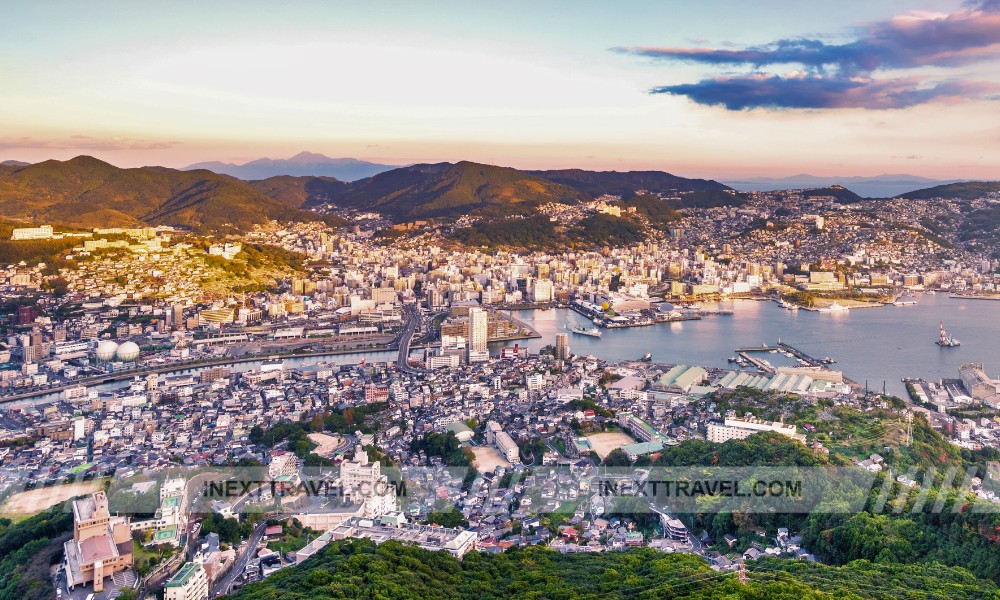
This mesmerizing scene has earned its place among the “New Three Major Night Views of the World,” alongside Hong Kong and Monaco. The combination of urban brilliance and natural beauty is simply unparalleled. The view is even more breathtaking on clear nights when you can see the stars twinkling above and the lights reflecting in the calm waters below.
The Mount Inasa Observatory provides a perfect vantage point for this stunning spectacle. The observation deck offers 360-degree views, allowing you to see the entire city spread out before you. Several restaurants and cafes are nearby, where you can enjoy a meal or a drink while soaking in the magical atmosphere.
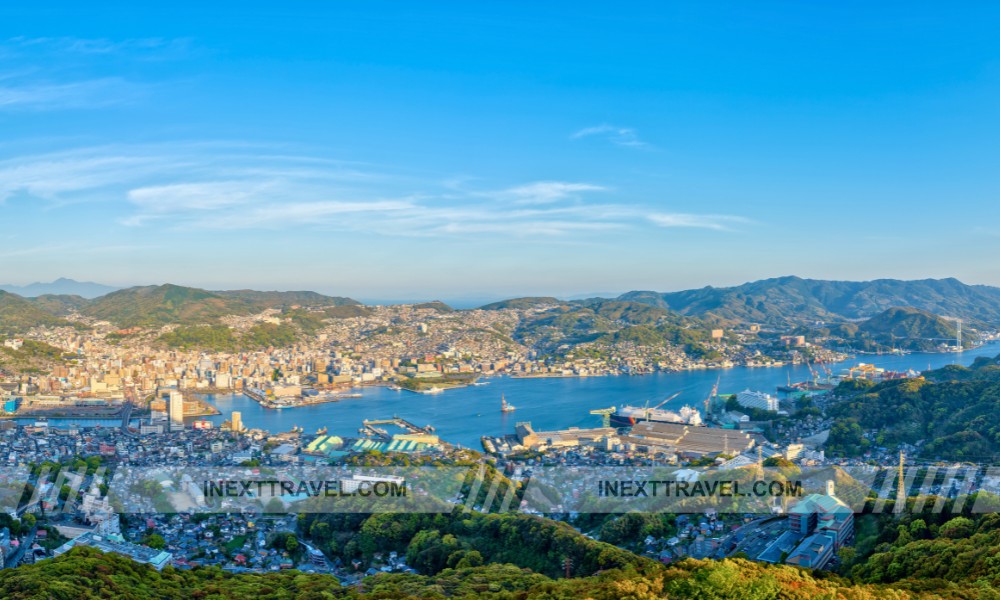
Mount Inasa is a must-visit destination for any traveler to Nagasaki. It offers an unforgettable experience that will leave you in awe of the city’s beauty and charm. Whether you’re a photography enthusiast, a romantic at heart, or simply someone who appreciates breathtaking views, a visit to Mount Inasa will undoubtedly be a highlight of your trip.
Number 6: Nagasaki Atomic Bomb Museum.
The Nagasaki Atomic Bomb Museum stands as a solemn and poignant reminder of the devastating atomic bombing that occurred on August 9, 1945. It serves as a place of remembrance for the victims, a testament to the resilience of the survivors, and a powerful advocate for peace and nuclear disarmament.
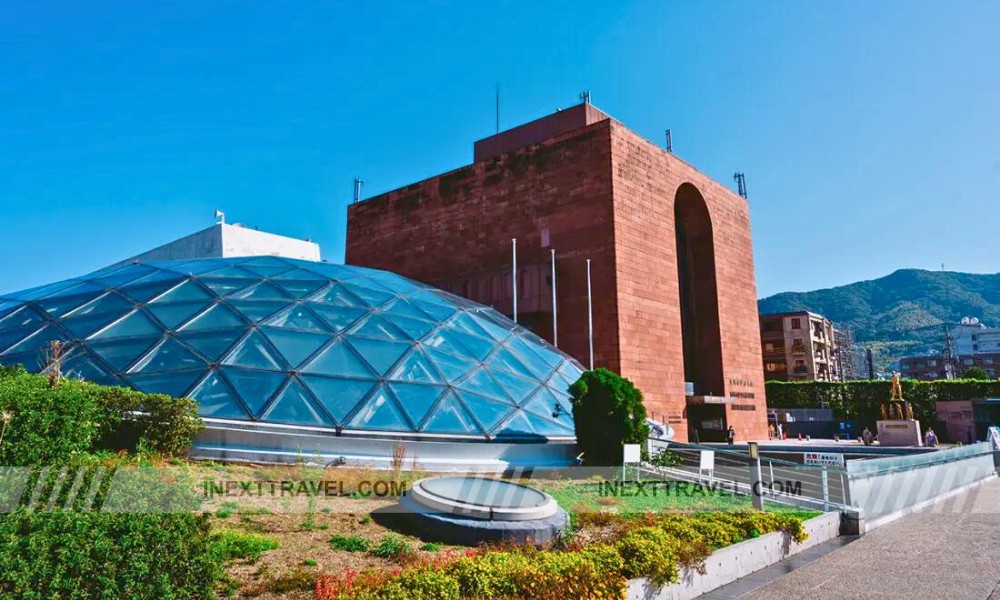
Upon entering the museum, you’ll be immediately struck by the somber atmosphere and the weight of history that permeates the exhibits. Through a collection of photographs, artifacts, documents, and personal testimonies, the museum meticulously chronicles the events leading up to the bombing, the harrowing experiences of those who lived through it, and the long-lasting consequences that continue to affect the city and its people.
The museum’s exhibits are both informative and emotionally impactful. You’ll see photographs of the devastation caused by the blast, personal belongings of the victims, and scientific explanations of the effects of radiation. You’ll hear stories of survivors, their courage, resilience, and unwavering hope for a peaceful future.
The museum doesn’t shy away from the harsh realities of the bombing. It presents a stark and unflinching portrayal of the human cost of war, the suffering endured by the victims, and the challenges faced by the survivors in rebuilding their lives and their city.
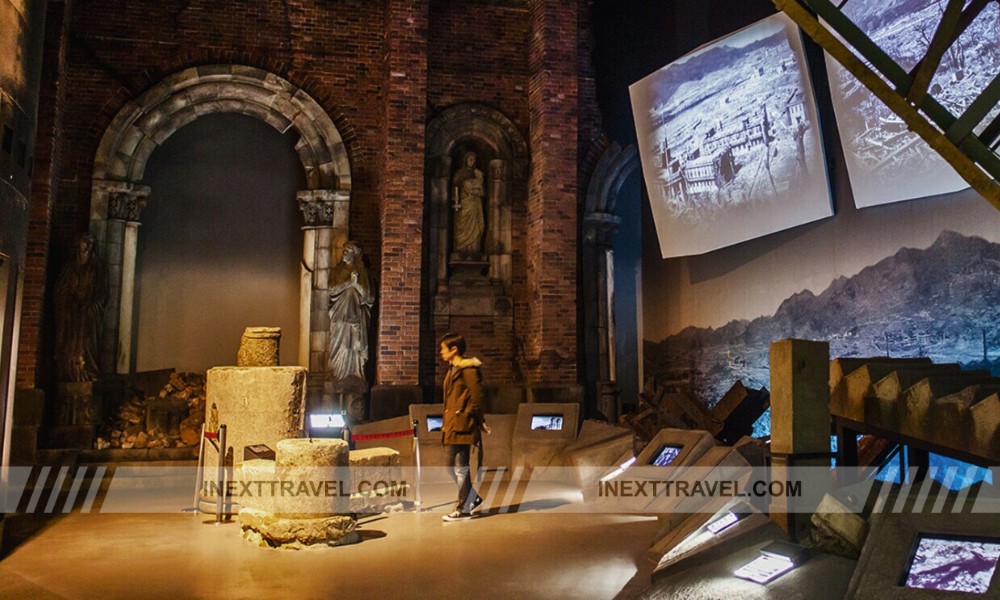
But the Nagasaki Atomic Bomb Museum is not just a place of sorrow; it’s also a place of hope. The museum’s message of peace and remembrance powerfully reminds visitors of the importance of learning from the past and working towards a future free from nuclear weapons. Through education and awareness, the museum strives to inspire visitors to advocate for peace and work towards a world where such tragedies never happen again.
Visiting the Nagasaki Atomic Bomb Museum is a profoundly moving and thought-provoking experience. It’s a place that will challenge you to confront the horrors of war, to empathize with the victims, and to reflect on the importance of peace in our world.
Number 5: Nagasaki Peace Park.
Adjacent to the Nagasaki Atomic Bomb Museum, the Nagasaki Peace Park provides a tranquil sanctuary for reflection and remembrance. This sprawling park, dedicated to the victims of the atomic bombing, is a testament to the resilience of the human spirit and the enduring hope for a peaceful future.
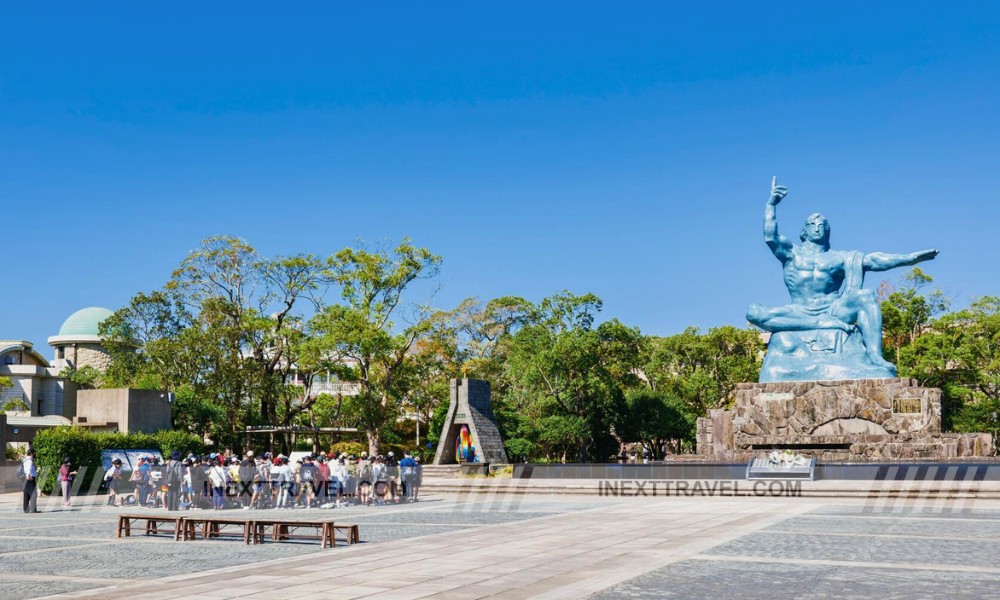
As you enter the park, you’ll be greeted by the iconic Peace Statue, a towering bronze figure with one arm outstretched towards the sky, symbolizing the threat of nuclear weapons and the other hand extended horizontally, representing peace. The statue’s serene expression and powerful message serve as a reminder of the importance of striving for a world free from nuclear weapons.
The Fountain of Peace, located in the heart of the park, symbolizes the thirst for peace that arose in the aftermath of the bombing. Its gentle water flow contrasts the stark reminders of destruction and represents hope and renewal.
The Memorial Cenotaph, a solemn monument dedicated to the victims of the bombing, contains the names of all those who perished. Visitors can offer prayers and pay their respects at this poignant site, which serves as a reminder of the human cost of war and the importance of remembering the past to prevent such tragedies from happening again.
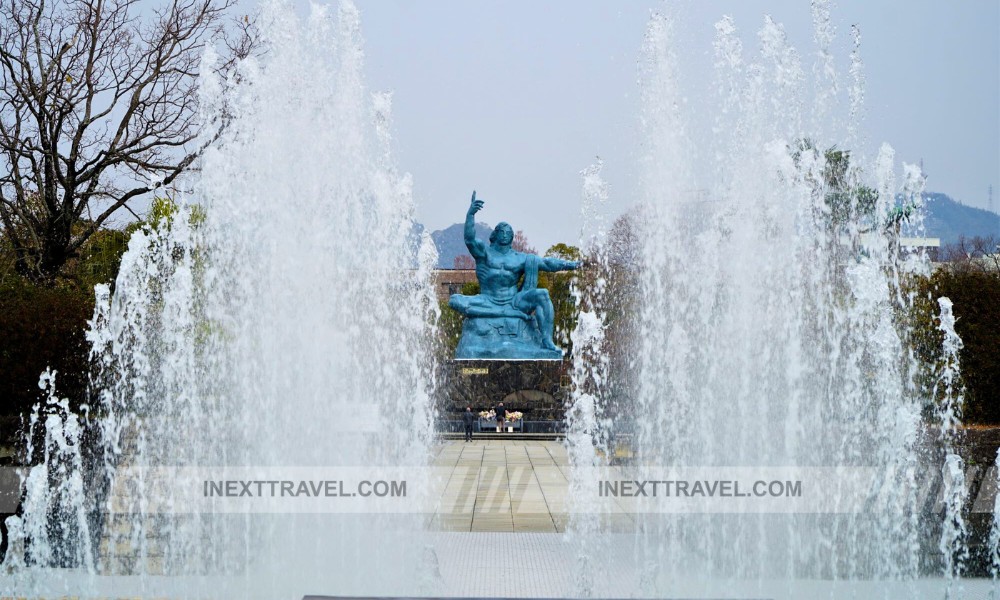
Beyond these iconic landmarks, Peace Park offers a serene and contemplative atmosphere with its lush greenery, tranquil ponds, and winding paths. Please take a moment to stroll through the park, reflect on the events that transpired here, and consider the importance of peace in our world.
The Nagasaki Peace Park is not just a memorial; it’s a place of hope, healing, and remembrance. It reminds us of the resilience of the human spirit in the face of adversity and the enduring power of hope for a peaceful future.
Number 4: Gunkanjima (Hashima Island).
Prepare to embark on a journey to a hauntingly beautiful island frozen in time: Gunkanjima, also known as Hashima Island or Battleship Island. This abandoned coal mining facility, located off the coast of Nagasaki, is a UNESCO World Heritage Site that offers a unique glimpse into Japan’s industrial past.
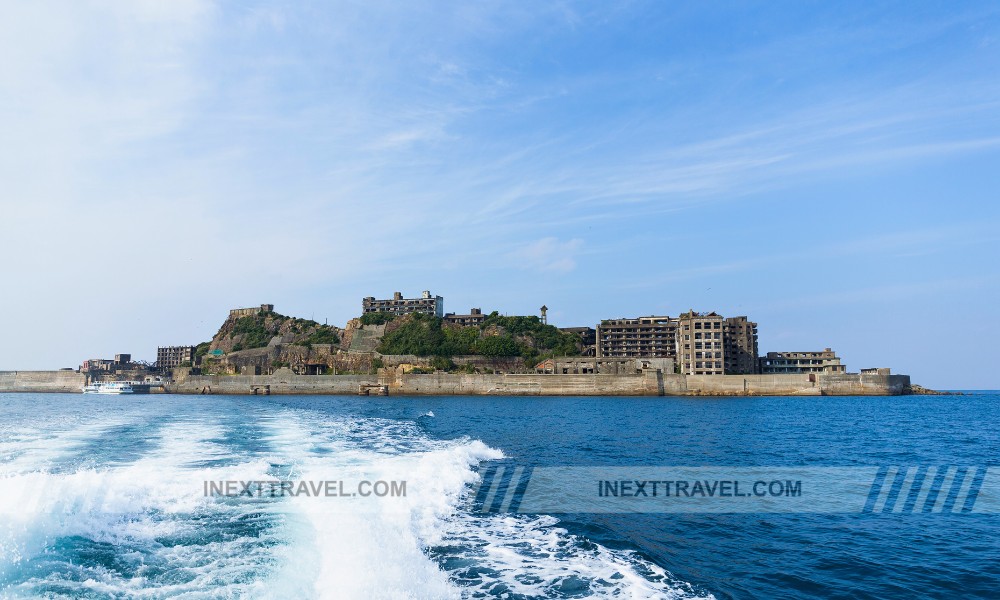
As you approach the island by boat, its imposing silhouette emerges from the sea. It is a concrete jungle of decaying buildings and rusted industrial structures. The island’s nickname, “Battleship Island,” is apt, as its shape and towering seawalls resemble a massive warship.
Once a bustling hub of activity, Gunkanjima was home to a thriving coal mining community. However, with the decline of the coal industry, the island was abandoned in 1974, leaving behind a ghost town of crumbling buildings, empty apartments, and overgrown vegetation.
Today, Gunkanjima is a popular tourist destination, attracting visitors with its eerie, post-apocalyptic atmosphere and fascinating history. Take a guided tour of the island, exploring the abandoned schools, hospitals, and housing complexes once housed thousands of residents. Learn about the harsh living conditions and the resilient spirit of the people who called this island home.
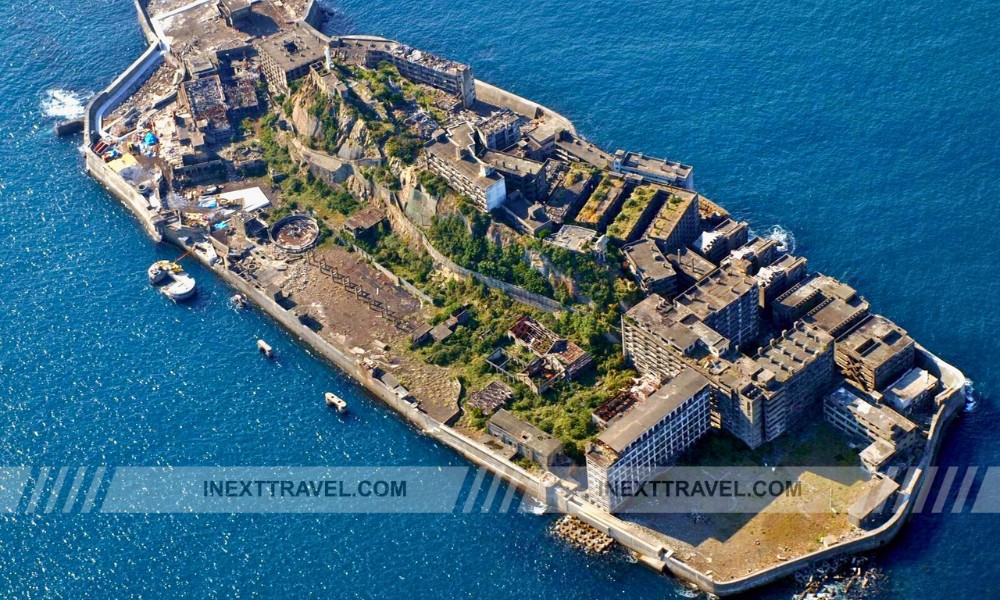
The island’s most iconic structure is the towering concrete apartment building, a testament to the island’s former density and the harsh realities of life in a mining community. The building’s weathered facade, cracked walls, and empty windows create a hauntingly beautiful scene that will stay with you long after you leave.
Gunkanjima is a place of contrasts, where the beauty of decay meets the resilience of the human spirit. It reminds us of human endeavors’ impermanence and nature’s power to reclaim what was once ours.
Number 3: Oura Church.
Our next stop is Oura Church, a place of serenity and historical significance. Also known as the Basilica of the Twenty-Six Holy Martyrs of Japan, it is the oldest standing Christian church in the country. Stepping onto the grounds, you’ll be transported to a different time and place, as the church’s elegant Gothic architecture starkly contrasts the surrounding cityscape.
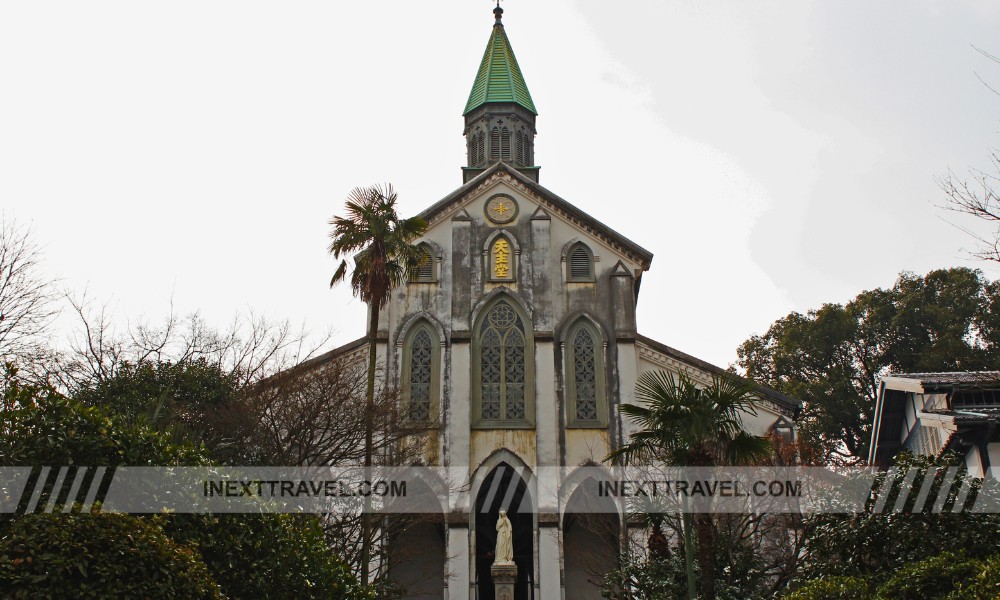
The church’s white facade, soaring spires, and intricate stained glass windows testify to the European influence that once permeated Nagasaki. The atmosphere is peaceful and contemplative, with soft light filtering through the colorful windows and gentle prayers filling the air. Take a moment to admire the ornate altar, the detailed sculptures, and the exquisite craftsmanship that went into creating this architectural masterpiece.
Our Church’s historical significance extends beyond its architectural beauty. In 1865, a group of hidden Christians who had secretly practiced their faith for centuries during Japan’s period of Christian persecution revealed themselves to a French priest. This event, known as the “Discovery of the Hidden Christians,” is a testament to the enduring power of faith and the resilience of the human spirit.
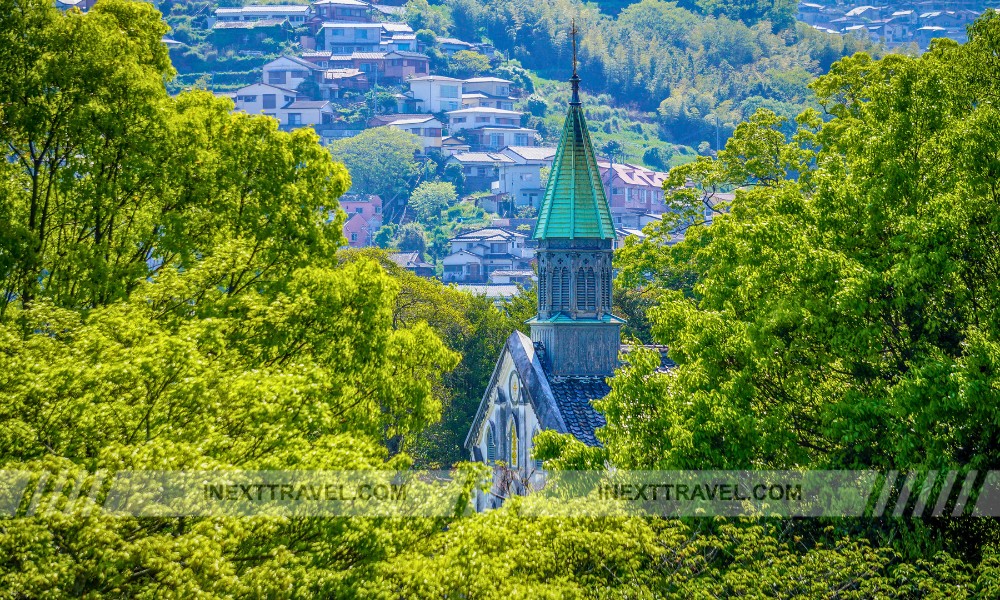
Today, Oura Church is a symbol of religious tolerance and cultural exchange. Visitors of all faiths can come together to appreciate its beauty, reflect on its history, and find peace in the heart of a bustling city.
Whether you’re a history buff, an architecture enthusiast, or simply seeking a peaceful retreat, Oura Church is a must-visit destination in Nagasaki. It’s a place where the past comes alive, you can connect with the stories of those who came before, and you can find solace and inspiration in the enduring power of faith and hope.
Number 2: Nagasaki Chinatown.
Step into a vibrant fusion of cultures in Nagasaki Chinatown, a historic neighborhood that has thrived for centuries as a testament to the city’s deep-rooted ties with China. As one of the oldest Chinatowns in Japan, this lively district is a feast for the senses, offering a captivating blend of aromas, sights, and sounds that will transport you to another world.

Stroll through the streets of Nagasaki Chinatown, and you’ll be greeted by a vibrant tapestry of colors, from the bright red lanterns that adorn the buildings to the colorful displays of goods in the shops. The air is filled with the enticing aromas of sizzling street food, laughter and conversation, and the lively music emanating from the restaurants and shops.
Indulge in a culinary adventure as you sample the diverse array of Chinese cuisine on offer. From mouthwatering dim sum and savory noodles to delectable seafood dishes and sweet treats, there’s something to satisfy every palate. Be sure to try champon, a Nagasaki specialty with a hearty broth filled with noodles, vegetables, and seafood.
As you explore the streets of Nagasaki Chinatown, you’ll notice the unique blend of Chinese and Japanese cultures that has shaped this vibrant neighborhood. Traditional Chinese temples stand alongside Japanese shrines, and the architecture reflects a fusion of styles and influences.
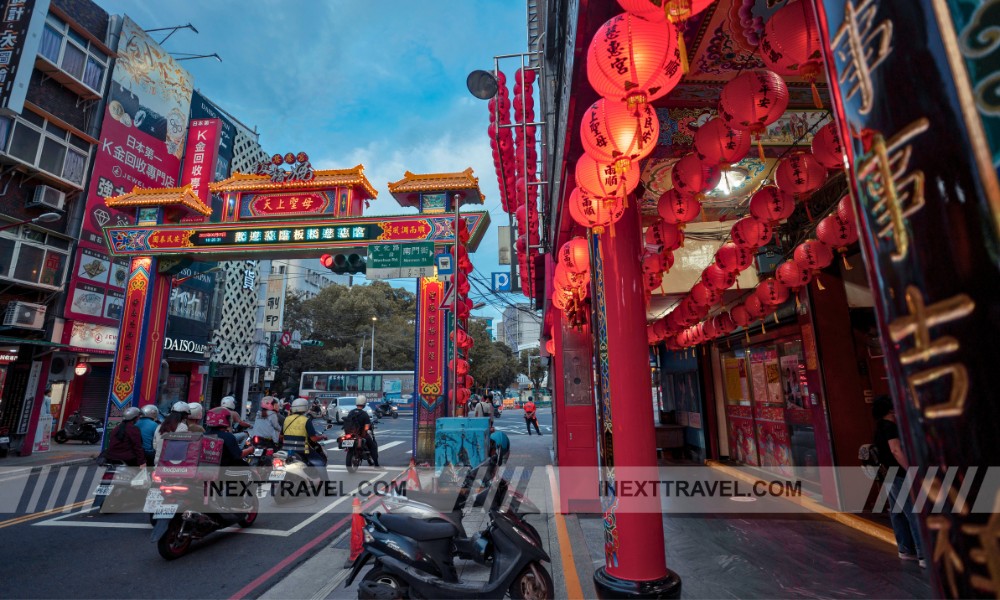
The Nagasaki Lantern Festival, held annually in Chinatown, is a dazzling light and color spectacle celebrating the Chinese New Year. Thousands of lanterns illuminate the streets, creating a magical atmosphere and a sense of community celebration.
Whether you’re a foodie, a history buff, or simply seeking a vibrant and unique cultural experience, Nagasaki Chinatown is a must-visit destination. Its lively atmosphere, delicious cuisine, and rich cultural heritage will leave you captivated and wanting more.
Number 1: Nagasaki Lantern Festival.
And now, for the crowning jewel of our Nagasaki journey: the Nagasaki Lantern Festival. This annual spectacle, usually held in late January to early February, transforms the city into a dazzling wonderland of light and color.
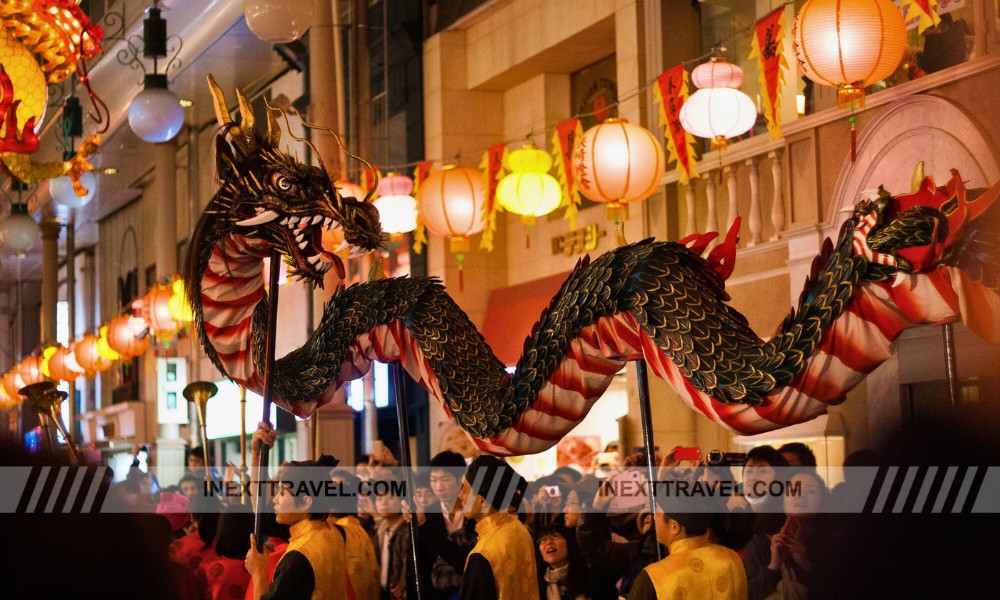
Imagine walking through streets adorned with over 15,000 vibrant lanterns in all shapes and sizes, from giant dragons and mythical creatures to delicate flowers and animals. The city comes alive with a magical glow as the lanterns cast their warm light on the buildings, the streets, and the faces of the revelers.
The festival is a true feast for the senses. The air is filled with the sounds of traditional music, the aroma of delicious street food, and the excited chatter of locals and tourists alike. Lion dances, dragon dances, and other cultural performances add to the festive atmosphere, creating an unforgettable experience that will stay with you long after the lanterns have been extinguished.
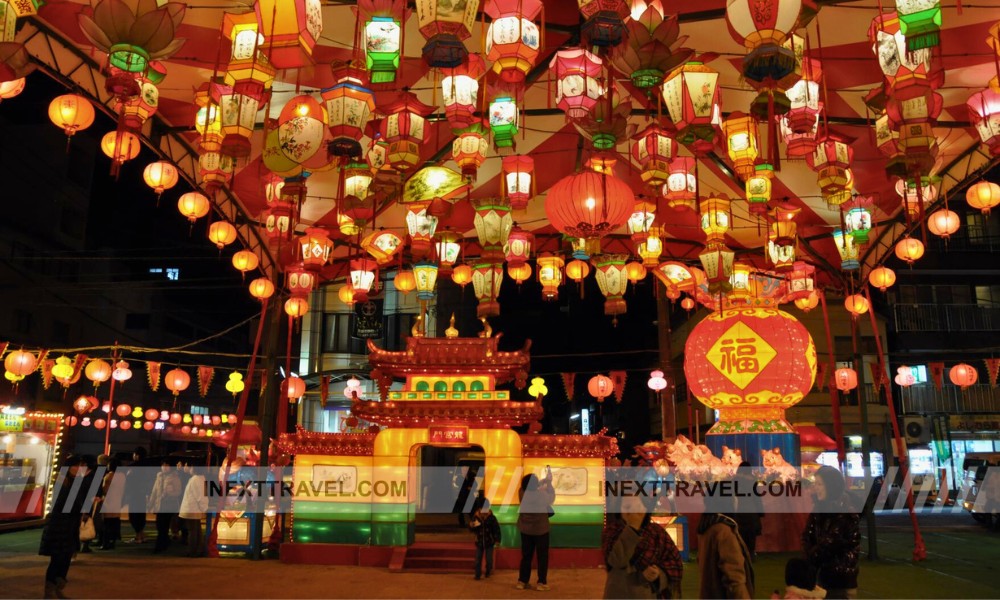
But the Nagasaki Lantern Festival is more than just a visual spectacle. It celebrates the city’s rich cultural heritage, a fusion of Chinese and Japanese traditions passed down through generations. The festival originated in Nagasaki’s Chinatown, where it was initially a celebration of the Chinese New Year. Over the years, it has grown into a city-wide event attracting worldwide visitors.
Whether you’re a culture enthusiast, a photography lover, or simply someone who enjoys a good festival, the Nagasaki Lantern Festival is a must-see. It’s a truly unique and unforgettable experience that will leave you with a lasting impression of Nagasaki’s vibrancy, diversity, and rich cultural heritage.
Conclusion
Nagasaki’s allure is a harmonious blend of history, culture, and natural beauty.
From the tranquil gardens of Glover Garden to the poignant reminders of the past at the Nagasaki Peace Park and the vibrant festivities of the Lantern Festival, this city offers a unique and unforgettable experience.
Each of the ten best beautiful places in Nagasaki showcases a different facet of its rich tapestry, leaving visitors with lasting memories and a yearning to return.
Whether you’re drawn to its historical significance, cultural fusion, or natural wonders, Nagasaki promises a journey of discovery and enchantment.
So pack your bags, embrace the unexpected, and let Nagasaki’s beauty and charm leave an indelible mark on your heart and soul.